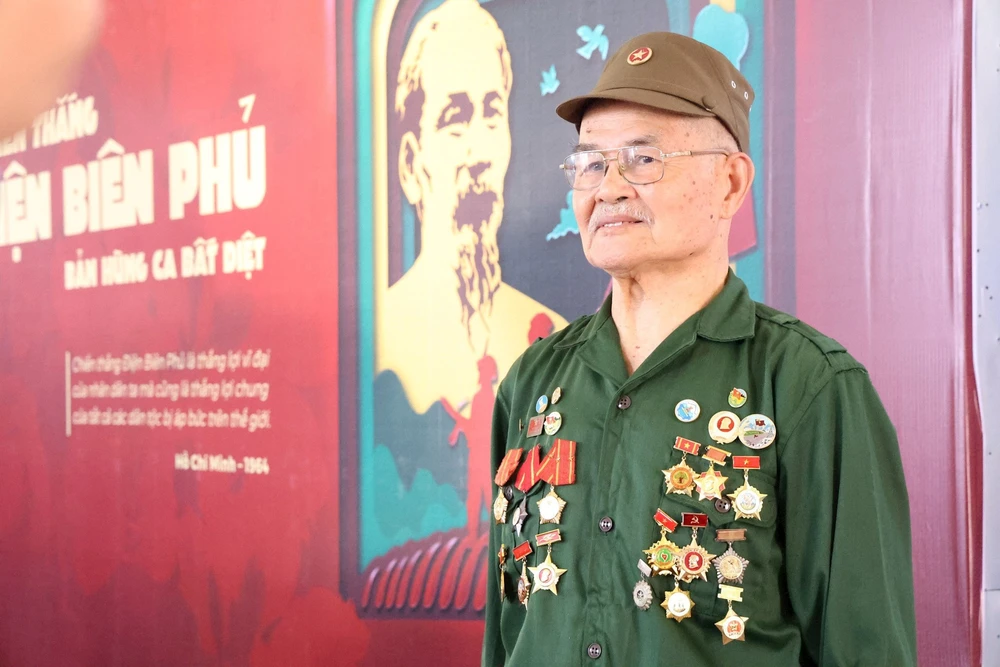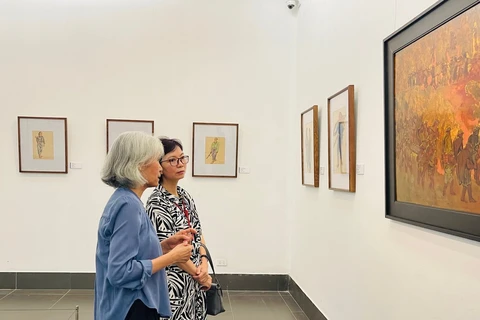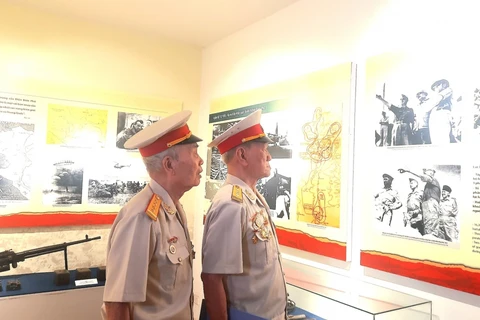
Hanoi (VNA) – Seventy years have passed, yet for former Dien Bien soldiers like Bui Kim Dieu, the resounding victory remains an intact memory in his mind.
He expressed his pride in joining the inaugural battle of the Dien Bien Phu campaign at the "steel gate" of Him Lam in an interview with Vietnam Plus e-newspaper.
On March 13, 1953, at precisely 5 pm, the Vietnamese troops opened fire on the Him Lam fortress, starting the Dien Bien Phu Campaign.
The next day, they successfully destroyed this fortification. Then his unit was assigned the task of surrounding and seizing Doc Lap Hill. At that time, due to bomb destruction and loss of communication, there was an urgent dispatch from the regiment (known as Nam Ninh) sent to three battalions, namely Nam Ke, Nam Tien and Nam Thang. Dieu and his two comrades took charge of delivering the dispatch.
All three people were injured, he recalled.
Recognising the importance of this task, he managed to bandage his wound, wriggled through the trenches, and navigated through bullets and bombs to reach the regiment headquarters.
“After delivering the dispatch, I fainted from blood loss,” Dieu added.
Hill A1 was the command centre, where the headquarters of the French army gathered, including the command bunker of General De Castries, so the capture of this fortification was decisive. The campaign command assigned Division 316 to secretly dig a tunnel into the heart of Hill A1 and arrange about 1,000kg of explosives to pull down the enemy entrenchment at the hill.
Recalling the days when he fought in the battle of Hill A1, veteran Hoang Van Bay from Regiment 176 said that he and his comrades were assigned to dig a trench from the forest to the hill.
“At first, we lay close to the ground to dig because standing would expose us to enemy fire. When the trench was a little deeper, we could dig sitting down. Gradually, our trench was close to the enemy's command bunker," Bay said, elaborating that they camouflaged themselves by placing trees on top of the trench.
Bay couldn’t hold back his tears when recalling that there were battles so fierce that his comrades fell in such numbers that a military chef brought 90 rice bowls but could only serve 10 because 80 people had died.
Although it was so painful, the brave young soldiers did not falter. They took over the positions left by the fallen soldiers, making the trenches longer, reaching further to bring food, weapons, and medicine to the battlefield.
However, there is an event that Bay will never forget in his life. It was when he was hit in the thigh and taken to the rear during the general assault on May 7, 1954.
As he lay in his hospital bed, Bay heard that his army had completely destroyed the Dien Bien Phu stronghold and that the enemy had surrendered.
"Everyone jumped up and down. Even though I was injured, I stood up, cheered, and hugged everyone because I was extremely happy," Bay said./.






















